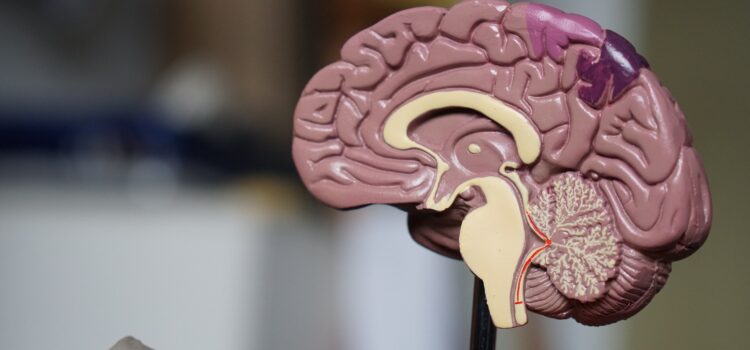

This article is an excerpt from the Shortform summary of "Brain On Fire" by Susannah Cahalan. Shortform has the world's best summaries of books you should be reading.
Like this article? Sign up for a free trial here .
What is anti NMDA encephalitis? How did it affect Susannah in Brain on Fire.
Anti-NMDA-receptor encephalitis, or anti NMDA encephalitis, is the diagnosis that finally explained why Susannah had been so sick. Her immune system was attacking her brain.
Read more about anti NMDA encephalitis and how Susannah finally received her diagnosis.
Suspecting Anti NMDA Encephalitis
The biopsy confirms that Susannah’s brain is inflamed, seemingly under attack by her own immune system. She’s put on the highest possible dose of intravenous steroids, but her condition doesn’t improve right away. Her panic attacks increase, accompanied by grimacing, shaking, and zombie-like arm motions.
Dr. Najjar believes Susannah has NMDA autoimmune encephalitis. Dr. Russo thinks she has paraneoplastic syndrome, a condition associated with cancer: As the immune system attacks the cancer, it may also attack healthy tissue in the spine or brain, causing psychosis or catatonia.
They’re also investigating a third possibility, which is anti NMDA encephalitis. Drs. Russo and Najjar send Susannah’s cerebrospinal fluid to Dr. Dalmau, the neuro-oncologist who had conducted the study on four young women that Dr. Najjar remembered when he saw Susannah’s clock test. Like Susannah, the four women in Dalmau’s study had a high white blood cell count and suffered from hallucinations, confusion, and memory deficits. They also had two other things in common: an ovarian tumor and antibodies that disable a critical apparatus in the brain called the NMDA receptor. By the time Susannah is struck by anti NMDA encephalitis, Dr. Dalmau has developed two tests that allow for a swift and accurate diagnosis.
NMDA Receptors
Everything we do, from lifting a glass to reading a book, results from a chemical signal triggering specific brain cells to fire or not. If a cell can’t receive a signal, it can’t initiate or inhibit behavior.
Cells receive signals through receptors. NMDA receptors excite cells that participate in learning, memory, higher functions, and personality. In 2007, Dr. Dalmau identified a new disease that would come to be called anti NMDA encephalitis. This condition is caused when antibodies disable NMDA receptors. Experiments indicate that a 40 percent loss of NMDA receptors results in psychosis. A 70 percent loss results in catatonia. An absence of any working NMDA receptors results in death.
Confirming NMDA Autoimmune Encephalitis
That afternoon Dr. Russo gives Susannah’s dad the news they’ve been waiting for: Dr. Dalmau has confirmed a diagnosis of anti-NMDA-receptor encephalitis.
Dr. Russo explains that NMDA autoimmune encephalitis is frequently instigated by a tumor. If Russo finds any links to Susannah’s earlier bout with melanoma, the team will move on to chemotherapy. At the word “chemotherapy,” Susannah starts to sob.
Being diagnosed with a rare disease changes Susannah’s status in the ward. Doctors, interns, and residents invade her room to discuss her condition. One young intern speaks as if Susannah isn’t present, telling the group that Susannah’s ovaries may have to be removed.
Susannah begins to cry. Her dad bolts to his feet. “Get the fuck out of this room,” he rages at the intern. He reassures Susannah the intern has no idea what he’s talking about.
Susannah is checked for tumors; she has none. Najjar decides to put her on an aggressive treatment plan—her condition is too precarious to allow it to worsen. If his decision is wrong, Susannah might never recover, but she’s too close to the edge to do otherwise.
With anti NMDA encephalitis, antibodies can persist months after the disease has run its course. Recovery is often halting, with a 4 percent chance of mortality.
Going Home
After twenty-eight days in the hospital, Susannah is discharged. She’ll need an at-home nurse; biweekly visits to the hospital to flush out the antibodies with a plasma exchange; a full-body 3-D scan; and full-time rehab. It might not be enough to retrieve Susannah’s former self, but they have a plan, and Susannah’s going home.

———End of Preview———
Like what you just read? Read the rest of the world's best summary of Susannah Cahalan's "Brain On Fire" at Shortform .
Here's what you'll find in our full Brain On Fire summary :
- How a high-functioning reporter became virtually disabled within a matter of weeks
- How the author Cahalan recovered through a lengthy process and pieced together what happened to her
- How Cahalan's sickness reveals the many failures of the US healthcare system






